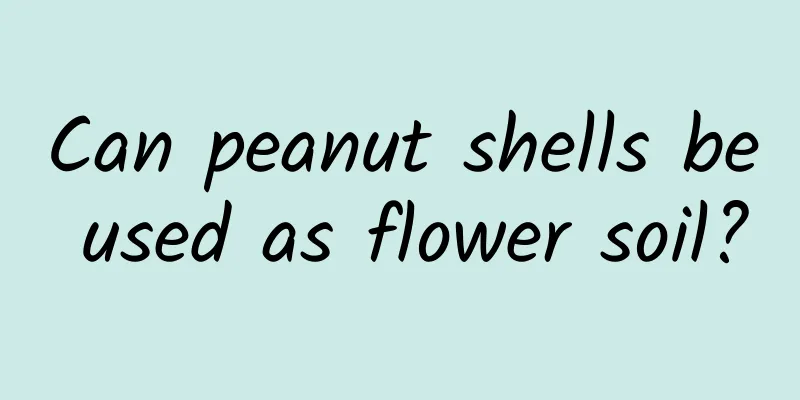Can peanut shells be used as flower soil?

Can peanut shells be used as flower soil?Peanut shells can be used as flower soil, but they cannot be applied directly. They must be decomposed first. The main components of peanut shells are lignin and cellulose, which are not easy to decompose. Applying them directly to the soil will cause the soil's water retention capacity to weaken. They must be decomposed before they can be used. Using them after fermentation can improve soil permeability, increase soil fertility and water retention. How to use peanut shells to grow flowers1. When growing flowers, the soil can easily become compacted and airtight. Before planting, you can put peanut shells at the bottom of the flowerpot and cover them with soil. This can help the soil in the flowerpot maintain good air permeability and drainage, so you don't have to worry about the soil becoming compacted. The effect is very good. 2. Flowers need to be supplemented with an appropriate amount of potassium fertilizer during their growth period. After the peanut shells are burned, their ashes are potassium fertilizers. The ashes can be sprinkled in flower pots to promote the growth of roots and stems, green leaves, and reduce diseases and pests. 3. Crush the peanut shells and spread them on the surface of the potting soil, which can also be very useful. When the temperature is low in winter, it can play a good role in preventing frost and keeping warm. In the high temperature in summer, it can also shade the roots of flowers and plants and prevent rain erosion and loss of potting soil. 4. Peanut shells can be used as planting materials for orchids, but you need to add some perlite, volcanic rock or other granular planting materials. The peanut shells need to be crushed in advance, and the amount should not exceed one third, otherwise it will easily cause root rot of the orchid. Precautions for growing flowers with peanut shellsIt is best not to use peanut shells directly for curing. They need to be fermented in advance and mixed with an appropriate amount of manure, crop straw, water, etc., and piled up for fermentation. If used directly, it is easy to cause root rot. When using, it is better to add a small amount. Using too much at one time will also affect the growth of flower plants. |
<<: Can the rooting plant be hydroponically cultivated? Hydroponics methods and precautions
Recommend
What fertilizer to use for konjac
When planting konjac, if conditions permit, it is...
Can nasturtium be hydroponically cultivated? Hydroponics cultivation method
Can nasturtium be grown hydroponically? Nasturtiu...
What is the role of freesia
Growth habits of freesia Freesia is native to sou...
What to do if spider plants turn yellow: new planting, soil cultivation, and hydroponic treatment methods
1. What to do if the skin turns yellow When you f...
What is the flower language of Frost Morning?
Flower language: Frozen flame. This is a characte...
How to plant poplars? Planting methods and management points
Poplar growth environment requirements Poplar is ...
How often should azalea be watered? Does it need to be watered frequently?
How often should azalea be watered? Rhododendron ...
How to care for baby's breath during its flowering period
Management of flowering period soil The roots of ...
How to care for old jasmine piles? Cultivation methods and precautions for old jasmine piles
· If the old jasmine is well-maintained, it can b...
How to graft Prunus armeniaca
Method and time of grafting elmleaf plum There ar...
How to breed white horse bones
1. Soil White horse bone is more suitable for cul...
What kind of soil is good for repotting lucky bamboo? Should we pay attention to the season when repotting?
1. What kind of soil is good for repotting? When ...
When is the best time to plant broccoli?
Broccoli, also known as green cauliflower, brocco...
How to care for papaya trees
1. Soil When growing papaya trees, you must use f...
Key points for spring management of apricot trees
Soil Management for Apricot Trees The roots of th...









